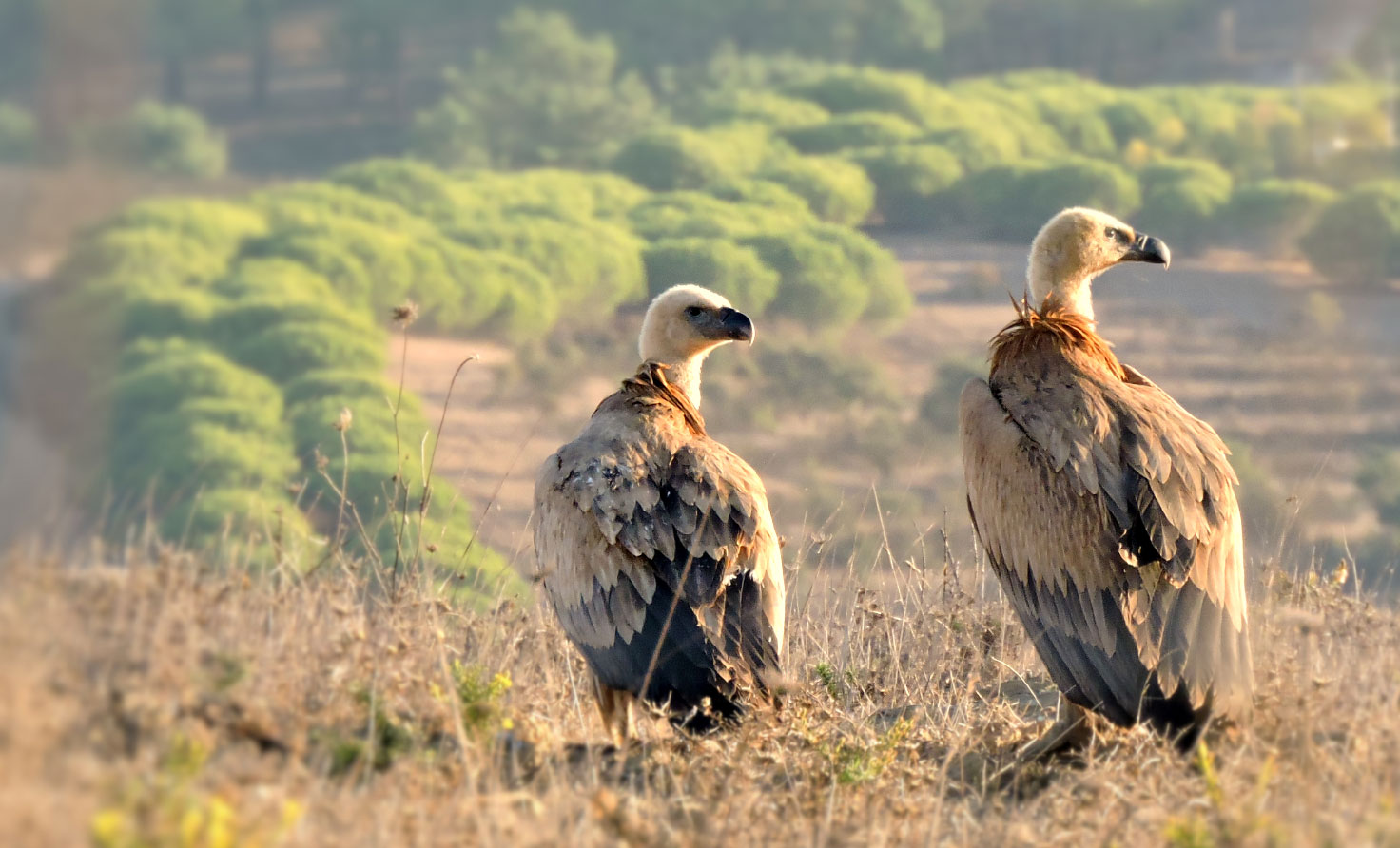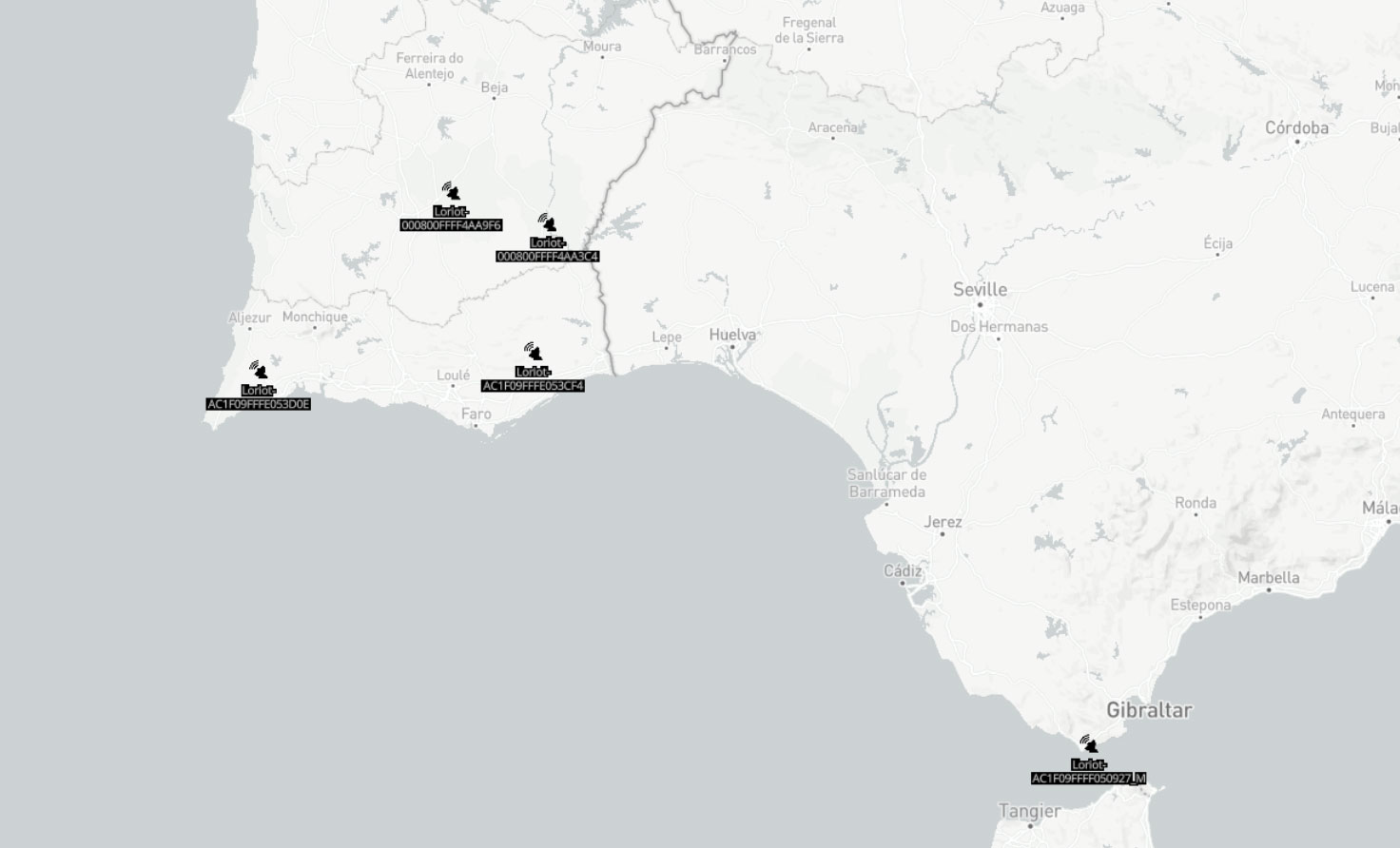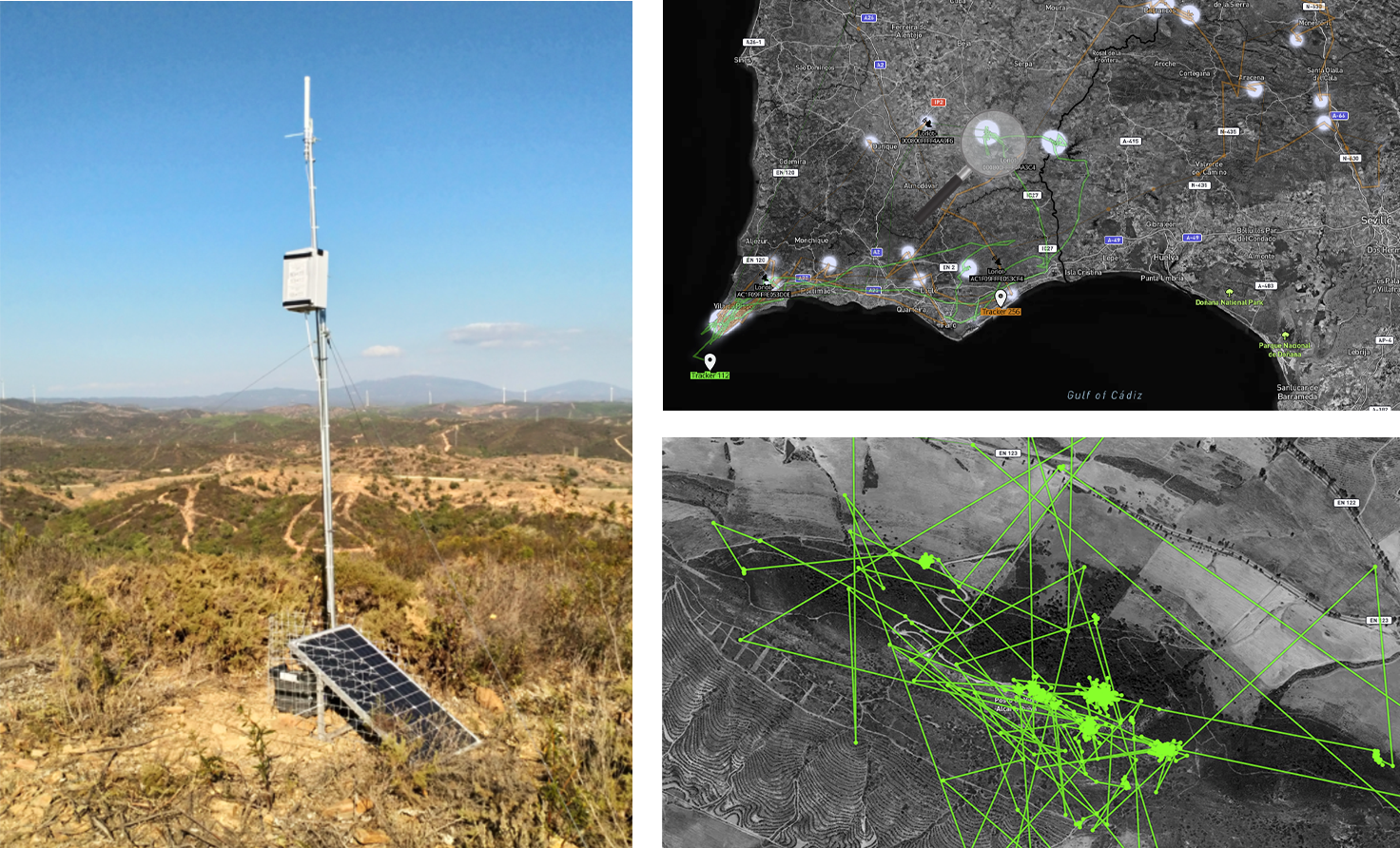Solution
In this study the research team deployed six GPS-LoRa trackers on Griffon Vultures Gyps fulvus; the aims for this study were: (1) to test the performance of these trackers during deployment on a large soaring bird and (2) to understand the movements of these birds in relation to wind farms because this species is highly susceptible to collision with wind turbines and power lines.

Juvenile Griffon Vultures from Spain and Portugal migrate to Africa for their first winter season. These large soaring birds struggle to cross water because the air currents differ compared to over land. As such they try to find the shortest sea crossing to Africa which is between Tarifa in southern Spain and the north coast of Morrocco. Many of these birds end up near Sagres in south west Portugal before then flying east following the coast into Spain. A large number of wind turbines have been constructed in this area and along the route between Sagres and Tarifa. To reduce the risks to these birds it is necessary to better understand their movements.
To receive the location messages from the tagged animals, four LoRaWAN gateways were deplyed - one near Sagres, one near Castro Verde further in land, one near Tavira and one in Tarifa, close to Gibraltar. The gateways receive the data sent by the GPS trackers and then forward it via the mobile phone network to the LORIOT server.





